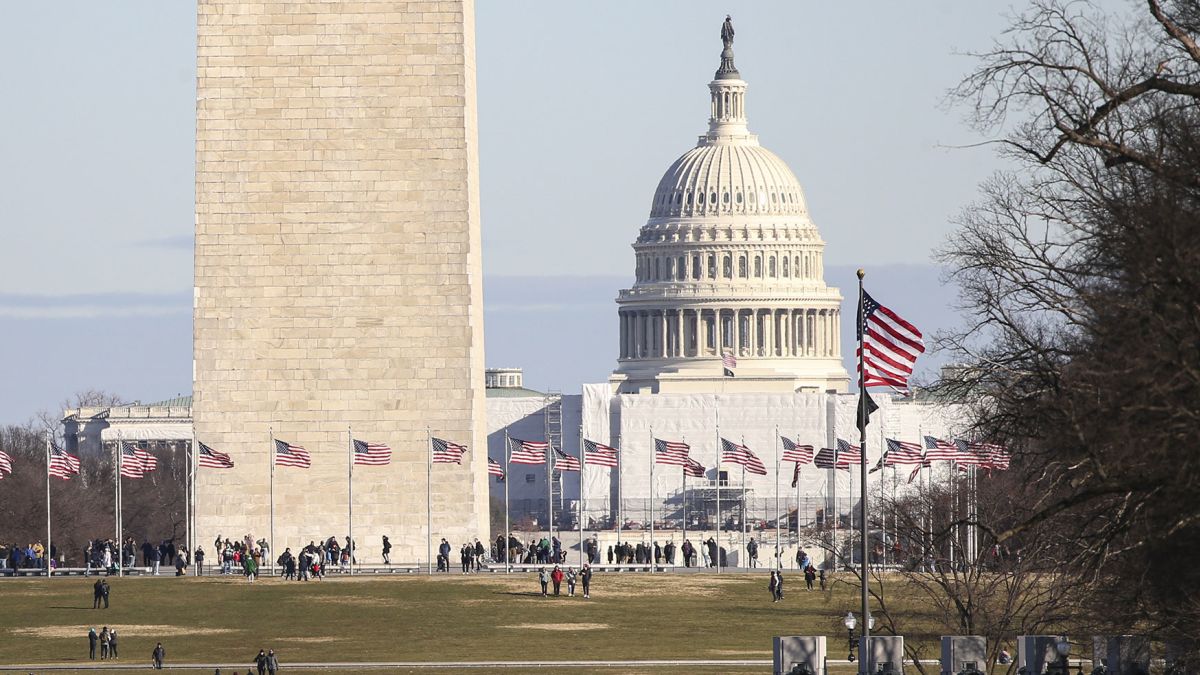The US debt ceiling explained 1:58
(CNN) --
Time is running out to resolve the drama over America's debt ceiling.
This Thursday, the country reached its debt limit, prompting the Treasury Department to take extraordinary measures to avoid default.
While Treasury Secretary Janet Yellen does not expect the US to default on its debt before early June, Congress needs to seriously negotiate a solution, which is not expected to be easy.
Here's what you need to know about the situation.
What is the debt ceiling?
The debt ceiling is the maximum amount, set by Congress, that the federal government can borrow to finance obligations that lawmakers and presidents have already approved, because the government runs budget deficits and the revenue it collects is not enough .
Increasing the ceiling does not authorize new spending commitments.
The debt ceiling, which currently stands at $31.4 trillion, was created more than a century ago and has been changed more than 100 times since World War II.
advertising
Although originally designed to make it easier for the federal government to borrow, the limit has become a way for Congress to restrict the increase in debt, making it a political issue in recent decades.
Still, fear of a default has led congressmen to pass laws to raise or suspend the ceiling each time, most recently in December 2021.
The US Congress votes to increase the debt ceiling by US$ 2.5 trillion until 2023
What happens if the US defaults on its debt?
In letters to House Speaker Kevin McCarthy, Yellen wrote that she expects the extraordinary measures to last until early June, though she noted there is "considerable uncertainty" surrounding that forecast.
With these measures exhausted and the cash available, the debt ceiling crisis would begin to have very real repercussions.
If the government can no longer borrow, it will not have enough money to pay all its bills in full and on time, including interest on the national debt.
So you'd probably have to temporarily delay payments or default on some of your commitments, which could affect Social Security payments, veterans' benefits and federal employee wages, among others.
But no one knows exactly how the Treasury would handle the situation, since that has never happened.
A default would also wreak havoc on the US economy and global financial markets, as well as raising borrowing costs.
Even the threat of one in 2011 led to the only downgrade in the country's history.
ANALYSIS |
The United States will probably reach its debt ceiling this Thursday.
This is what could happen next
What are extraordinary measures?
These measures are mainly behind-the-scenes accounting maneuvers.
Treasury secretaries are authorized by Congress to take various kinds of extraordinary measures to prevent a default, giving lawmakers more time to raise or suspend the cap.
The secretaries of the Democratic and Republican governments have taken this type of action.
This time, Yellen plans to sell existing investments and suspend reinvestments from the Civil Service Retirement and Disability Fund and the Postal Service Retiree Health Benefits Fund.
It will also suspend the reinvestment of a public securities fund of the Savings Plan of the Federal Employees Retirement System (TSP, for its acronym in English).
These funds are invested in special Treasury securities, which are discounted from the debt limit.
Yellen's measures would reduce the amount of outstanding debt subject to the cap and temporarily provide the agency with additional capacity to continue financing the operations of the federal government.
This "debt issuance suspension period" will last until June 5, he wrote in a letter to McCarthy on Thursday.
No retirees will be affected, and the funds will be reinstated once the dispute is over.
Will Congress raise the debt ceiling?
The recent race for the speaker of the House of Representatives has raised questions about whether McCarthy will be able to corner hardline Republicans — who see a possible default as a way to force the government to cut spending — and negotiate a agreement with Democrats, who oppose any reduction.
For now, he is leaning towards using the debt ceiling crisis to cut spending and balance the US budget.
On Tuesday, McCarthy rejected Democratic calls for a full increase in the debt ceiling with no conditions.
The White House responded that it will not offer any concessions or negotiate to raise the debt ceiling.
Meanwhile, House Republicans are drawing up contingency plans that would tell the Treasury Department which payments to prioritize if lawmakers fail to agree on a debt ceiling.
How is the debt ceiling crisis different from a federal government shutdown?
Although often confused, a government shutdown occurs when Congress fails to pass a federal funding bill, while a debt ceiling crisis would occur if lawmakers fail to pass a law to raise the debt limit.
US Senate Passes Interim Bill to Avoid Government Shutdown
Congress last month passed a $1.7 trillion federal spending bill, averting a government shutdown that could have shut down non-essential operations and left many federal employees without pay.
The law will finance government operations until the end of the fiscal year, on September 30.
debt ceiling









